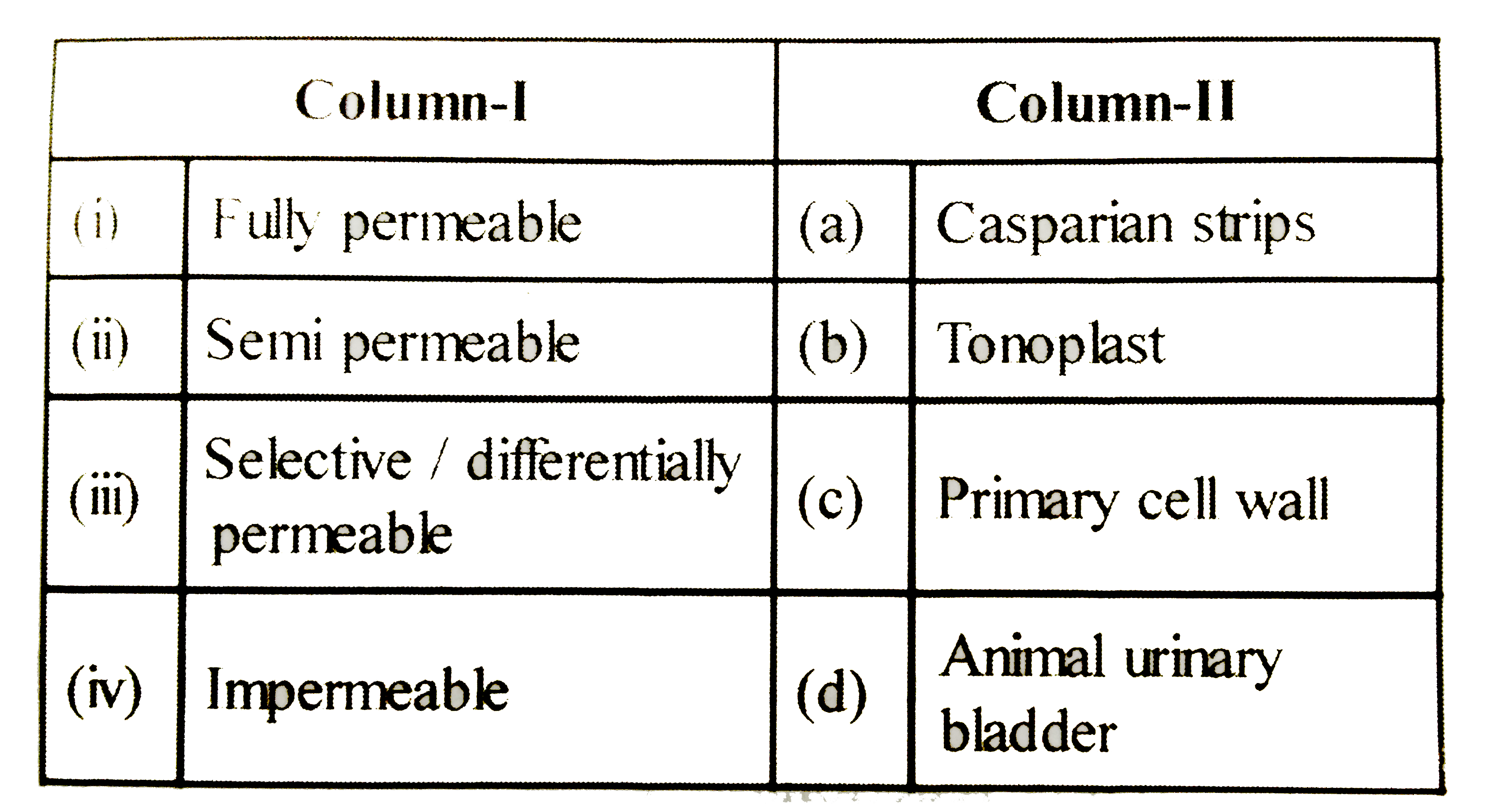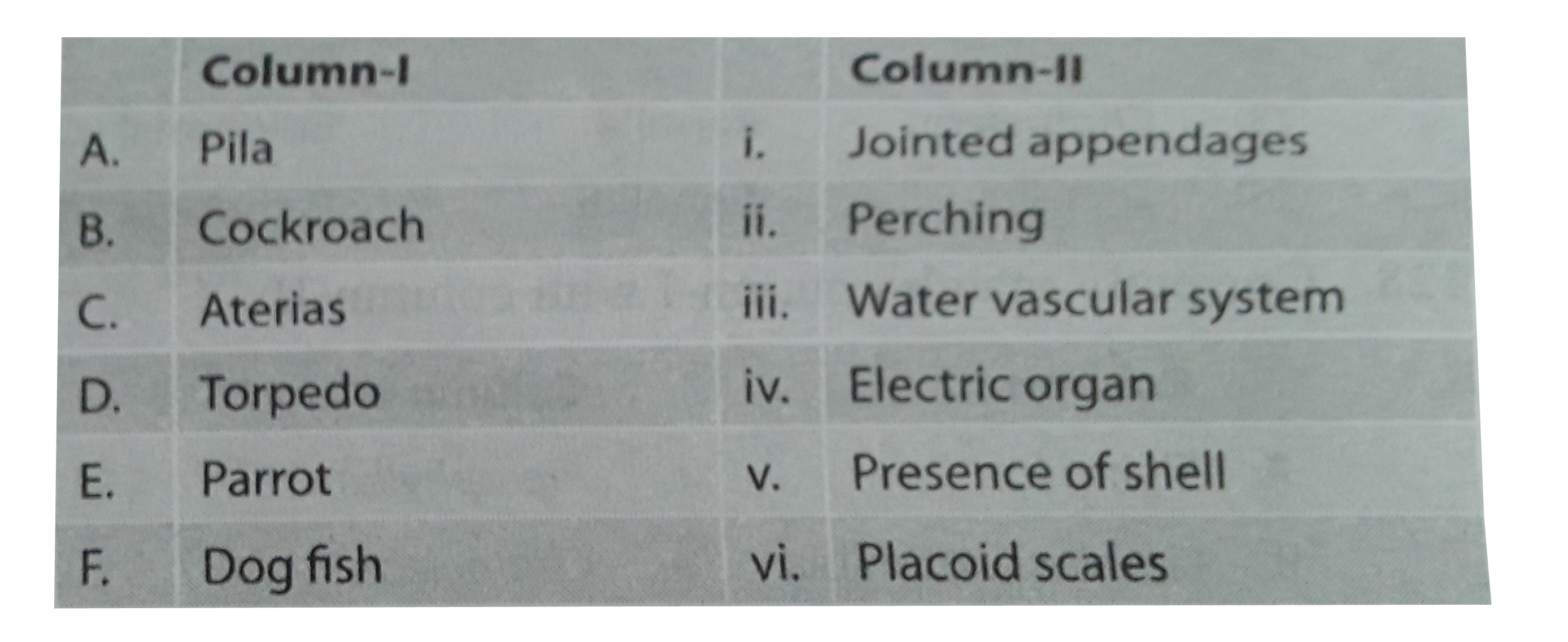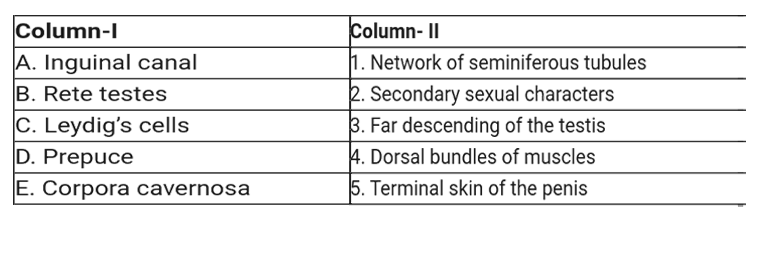Match column - I with column-II and choose the correct option
A - III, B - IV, C - I, D - II
A -II, B - IV, C- III,D - I
A -III, B - IV, C- II,D - I
A -IV, B - III, C- I,D - II
The correct Answer is:C
To solve the problem of matching Column I with Column II, we will analyze each group of organisms in Column I and find their corresponding examples in Column II.
1. Identify the Groups in Column I:
- A. Phaeophyceae
- B. Rhodophyceae
- C. Pteridophyceae
- D. Bryophytes
2. Identify the Examples in Column II:
- i. Funaria, Sphagnum
- ii. Equisetum, Pteris
- iii. Ectocarpus, Laminaria
- iv. Polysiphonia, Gracilaria
3. Match Each Group with Its Examples:
- A. Phaeophyceae (Brown Algae):
- The examples of Phaeophyceae include Ectocarpus and Laminaria.
- Match: A → iii
- B. Rhodophyceae (Red Algae):
- The examples of Rhodophyceae include Polysiphonia and Gracilaria.
- Match: B → iv
- C. Pteridophyceae (Ferns and their relatives):
- The examples of Pteridophyceae include Equisetum and Pteris.
- Match: C → ii
- D. Bryophytes (Mosses and Liverworts):
- The examples of Bryophytes include Funaria and Sphagnum.
- Match: D → i
4. Final Matching:
- A → iii (Ectocarpus, Laminaria)
- B → iv (Polysiphonia, Gracilaria)
- C → ii (Equisetum, Pteris)
- D → i (Funaria, Sphagnum)
5. Select the Correct Option:
- Based on the matches, the correct option is the one that corresponds to:
- A → iii
- B → iv
- C → ii
- D → i
Conclusion:
The correct option that matches Column I with Column II is the third option.
- A. Phaeophyceae
- B. Rhodophyceae
- C. Pteridophyceae
- D. Bryophytes
- i. Funaria, Sphagnum
- ii. Equisetum, Pteris
- iii. Ectocarpus, Laminaria
- iv. Polysiphonia, Gracilaria
- A. Phaeophyceae (Brown Algae):
- The examples of Phaeophyceae include Ectocarpus and Laminaria.
- Match: A → iii
- The examples of Rhodophyceae include Polysiphonia and Gracilaria.
- Match: B → iv
- The examples of Pteridophyceae include Equisetum and Pteris.
- Match: C → ii
- The examples of Bryophytes include Funaria and Sphagnum.
- Match: D → i
- A → iii (Ectocarpus, Laminaria)
- B → iv (Polysiphonia, Gracilaria)
- C → ii (Equisetum, Pteris)
- D → i (Funaria, Sphagnum)
- Based on the matches, the correct option is the one that corresponds to:
- A → iii
- B → iv
- C → ii
- D → i
The correct option that matches Column I with Column II is the third option.
Similar Questions
Knowledge Check
Match the column I with column II and choose the correct option
 A(a) ABCD1234B(b) ABCD4321C(c) ABCD1322D(d) ABCD2314
A(a) ABCD1234B(b) ABCD4321C(c) ABCD1322D(d) ABCD2314
Match the column-I with column-II and choose the correct option :

View SolutionMatch the column-I with column-II and choose the correct option :

View SolutionMatch the column-I with Column-II Choose the correct option :

View SolutionMatch the column I with column II

Choose the correct option.
View SolutionMatch Column I with Column II and choose correct option

View SolutionMatch Column I with Column II and choose correct option

View SolutionMatch Column-I with Column-II and choose the correct option of the following.

View Solution


